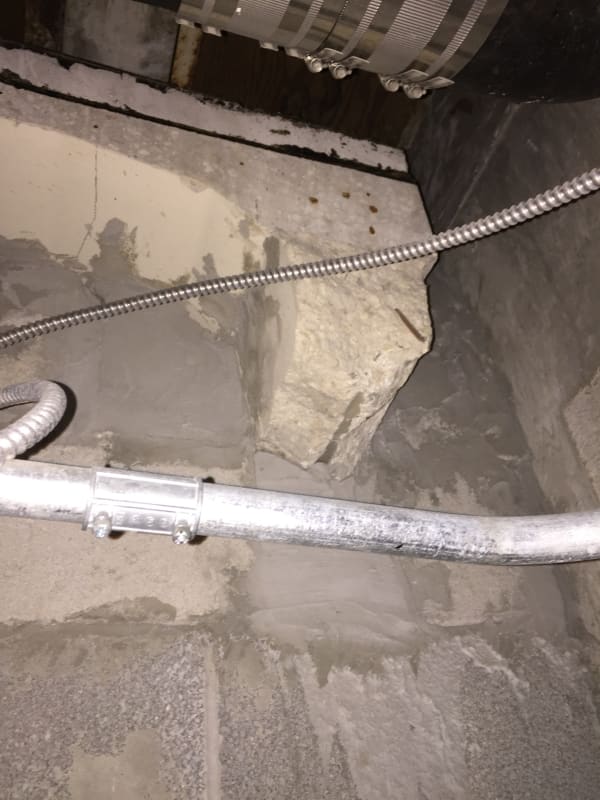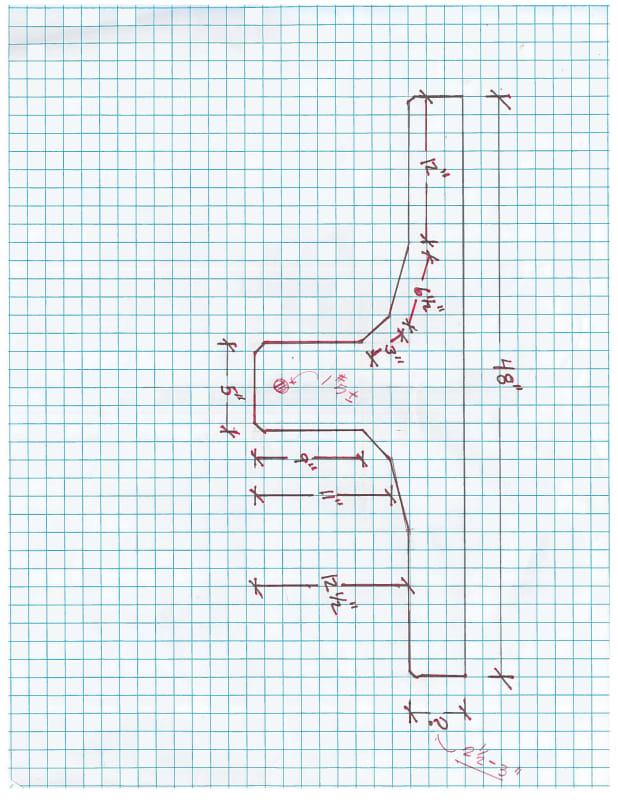vvaccare
Structural
- Jan 3, 2014
- 18
Good morning community,
I was hoping to throw this out there and see if I could get any insight from some of the more experienced precast engineers. I currently was dragged into a renovation project where the original EOR left, forcing me to take over. The existing building was built in the late 60's/early 70's, but the original drawings are not available for review. The building has been modified several times over the years. The area in question originally served as a single story building with roof loads. Sometime from then to now, the building has been added onto and now the area is serving as an office space with corridors. As of today, the client wants to raise the elevation of the floor by adding a new concrete slab topping, and placing terrazzo flooring on top.
The original framing system is a 12" precast single tee system. I have not had any luck finding any information for any 12" precast single tee members. Originally, I thought that it was a t-beam, but there are visible joints every 48" o.c. I've attached a sketch with the field measurements of the member for reference. The issue is these members are spanning 34', and based on the information I've been provided from the field they can only locate one #5 bottom bar. Apparently they found this #5 bar from a nearby tee that was cut/abandoned/modified (see picture). The picture shows a groove where an old reinforcing bar may have been placed, and based on the measurement they are claiming it to be a #5 bar. Looking at the picture, it does appear that there used to be strands at the top, but I have no idea if this is a correct assumption. I've instructed the project manager and contractor that further test should be done to locate any potential strands so I can better analyze the member.
Just running the calculations for a basic reinforced T-Beam, I can't even get the member to work with the live loads it has been experiencing over the years. So it goes with out saying I have severe doubts and reservations about adding any additional loads to these members. Unfortunately, all the information and pictures I have received are from the contractor and the project architect. I have been trying to arrange a site visit to inspect and observe the mess myself.
I was hoping that someone could possibly provide some basic information on any old precast single tee's. Any insight would be greatly appreciated.
Thank you.


I was hoping to throw this out there and see if I could get any insight from some of the more experienced precast engineers. I currently was dragged into a renovation project where the original EOR left, forcing me to take over. The existing building was built in the late 60's/early 70's, but the original drawings are not available for review. The building has been modified several times over the years. The area in question originally served as a single story building with roof loads. Sometime from then to now, the building has been added onto and now the area is serving as an office space with corridors. As of today, the client wants to raise the elevation of the floor by adding a new concrete slab topping, and placing terrazzo flooring on top.
The original framing system is a 12" precast single tee system. I have not had any luck finding any information for any 12" precast single tee members. Originally, I thought that it was a t-beam, but there are visible joints every 48" o.c. I've attached a sketch with the field measurements of the member for reference. The issue is these members are spanning 34', and based on the information I've been provided from the field they can only locate one #5 bottom bar. Apparently they found this #5 bar from a nearby tee that was cut/abandoned/modified (see picture). The picture shows a groove where an old reinforcing bar may have been placed, and based on the measurement they are claiming it to be a #5 bar. Looking at the picture, it does appear that there used to be strands at the top, but I have no idea if this is a correct assumption. I've instructed the project manager and contractor that further test should be done to locate any potential strands so I can better analyze the member.
Just running the calculations for a basic reinforced T-Beam, I can't even get the member to work with the live loads it has been experiencing over the years. So it goes with out saying I have severe doubts and reservations about adding any additional loads to these members. Unfortunately, all the information and pictures I have received are from the contractor and the project architect. I have been trying to arrange a site visit to inspect and observe the mess myself.
I was hoping that someone could possibly provide some basic information on any old precast single tee's. Any insight would be greatly appreciated.
Thank you.


